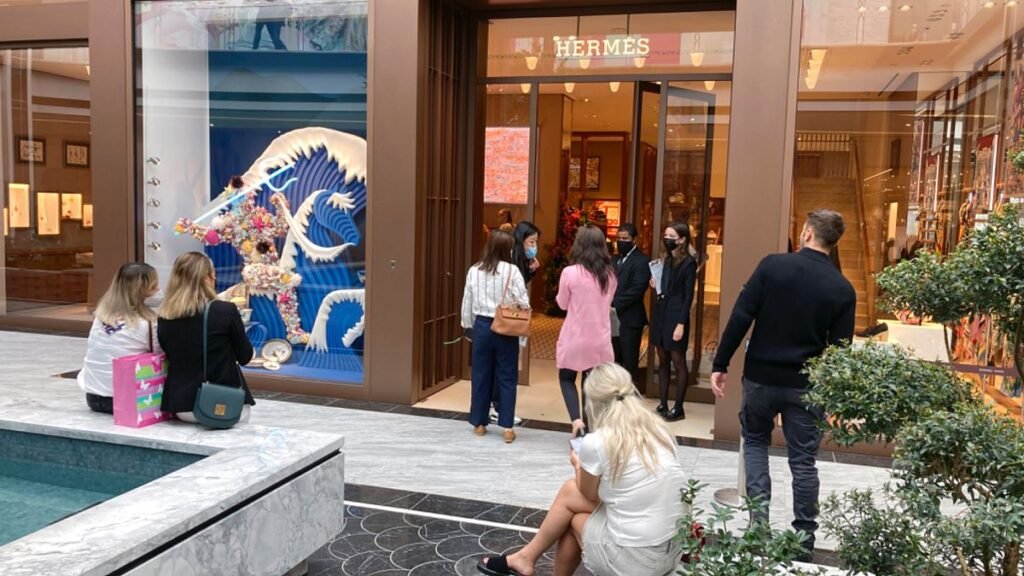A bag from a high end European fashion house such as Hermès, Louis Vuitton or Prada is a pricey purchase, which can cost hundreds of thousands of euros.
While many luxury European brands promise their goods are produced in Europe — which for many shoppers acts as a quality guarantee — TikTokers claiming to be Chinese manufacturers say they are the ones who really make luxury brands’ goods.
So, what’s really going on and are luxury fashion houses actively concealing the truth?
What do these videos claim and who is posting them?
Tens of thousands of TikToks have been posted under the viral hashtag #chinesemanufacturer, as Chinese content creators provide lists of manufacturers they claim really make luxury brands’ products.
The trend setter for these videos appears to be a TikToker who goes by the name Wang Seng, who speaks on behalf of a Chinese handbag manufacturer.
In a video which gained more than six million views — before it was deleted and subsequently reposted by other accounts — Seng claimed that “80% of luxury bags in the world are made in China.”
Seng alleged that “luxury brands take the almost finished bags back to their own country to do repackaging and logo installing.”
According to Seng, this method is supposedly what makes “the bags appear as ‘made in Italy’ or ‘made in France’, you know those ‘sophisticated’ European countries.”
Seng, as well as other TikTokers, claim they work for the original equipment manufacturers (OEM) for luxury brands — original equipment manufacturers make products which are subsequently sold by other companies under their own name.
In other videos, the 145% tariffs imposed on China by US President Donald Trump are directly referenced, as TikTokers encourage online shoppers to support Chinese factories and buy goods directly from them.
In some TikToks, content creators also emphasise how skilled Chinese workers are, breaking down how much it really costs to make luxury bags and flout how well they can be reproduced — in an explicit reference to China’s huge counterfeit market.
Do luxury brands make all their goods in China?
Speaking in English and referring to prices in dollars, the TikTok videos appear to targeting American consumers, who are known for buying European luxury goods en masse.
Contrary to what some TikTokers claim, there are strict rules which surround how European products are labelled.
To hold the title “made in Europe”, a product’s “last substantial transformation” must occur in the country of production.
Luxury brands are aware of this and on their website Hermès lists locations where it produces and manufactures products — none of which are in China. The same goes for Louis Vuitton.
Investigative journalist Noëmie Leclercq told EuroVerify that brands that she qualifies as sitting at the “lower end” of the luxury spectrum — such as Ralph Lauren or Prada — manufacture in China at stages of the production process.
However, she expressed more scepticism at this being the case for brands such as Hermès, which are at the top end of the luxury spectrum.
Despite this, the industry is shrouded with secrecy, “there’s no brand that I can say 100% doesn’t produce in China, they have all outlets there and it’s a market which was very dynamic until quite recently. So they obviously have facilities, factories, sales outlets and so on.”
But when it comes to the viral TikTok videos, Leclercq believes that the majority of products displayed by content creators are counterfeits.
This means that content creators’ claims that they work for or represent the OEM providers for luxury fashion brands are unlikely to be true — and the reason behind this trend is likely to be a political one.
“The Chinese government has been moving towards encouraging counterfeit production in a bid to retaliate against US tariffs. This comes as it is U-turning on its body of laws which surround the field of intellectual property” Leclercq told Euronews.
It is commonplace for the production of counterfeit to become a geopolitical tool added Leclercq, “after Russia’s full-scale invasion of Ukraine, luxury brands pulled out, which meant that counterfeit goods coming from Turkey began to enter the Russian market instead.”
Read the full article here
